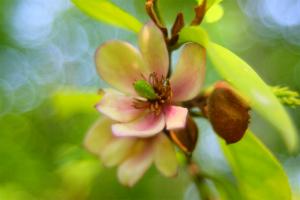1、 Curing method
1. Temperature: the temperature suitable for its development is between 18 degrees and 25 degrees. If the temperature exceeds 30 degrees, the branches of the plant will turn yellow. If the temperature is lower than 3 degrees, the plant will be frostbitten. Therefore, if you want to raise ivy, you must keep the temperature within an appropriate temperature range
2. Watering: the temperature in spring and autumn is relatively stable, and the temperature is not high. Generally, watering once or twice a week is OK. In summer, the temperature is relatively high, and the water evaporates faster. Watering is needed every other day. In winter, its growth capacity is weakened, and the demand for water is not so large. Watering once a week is OK
3. Fertilization: the consumption of nutrients during growth is relatively large. Liquid fertilizer with moderate fertilizer effect needs to be applied to it every two weeks. If there is no liquid fertilizer, granular fertilizer needs to be used to it every month. It should be noted that when selecting fertilizer species, it is necessary to avoid selecting fertilizer species with too much nitrogen, because excessive nitrogen elements will make the patterns on plant branches and leaves very shallow, which will affect its ornamental value
4. Light: it is not resistant to strong light. When it is illuminated, it is best to focus on astigmatism. One day a week is best to let it avoid contact with the sun and keep it in a cool place for breeding for one day. In addition to summer, the lighting time in other seasons is guaranteed to be five hours. The lighting time in summer cannot exceed five hours, and strong light cannot be accepted
2、 Breeding skills
1. Propagation: it can propagate by cutting. Cut off the strong branches from the healthy plant, with a length of about 30 cm. Remove all the leaves at the lower end, and then soak them in the rooting water for half an hour. After the incision is dry, you can insert them into the cultivation soil for cultivation. After inserting them, put them in a cool place for cultivation, and you can grow roots in about two weeks
2. Pruning: generally, it does not need pruning. It only needs more care at ordinary times and cut off the dry and rotten branches
3、 Problem diagnosis
1. Insect pest: it is easy to infect aphids. If found, chlorothalonil can be used to spray it
2. Disease: plant price comparison is prone to yellowing of branches and leaves. If yellowing of branches and leaves occurs, it may be because the content of nitrogen element in the soil exceeds the standard, it needs to be replaced or the use of nitrogen fertilizer should be reduced. If it is caused by too much light, it needs to be reduced
4、 Other issues
1. Toxicity: ivy is non-toxic
2. Edible: not directly edible

 jackfruit
jackfruit snake plant
snake plant hibiscus
hibiscus hydrangea
hydrangea lavender
lavender Green roses climb al...
Green roses climb al... If you don't pay att...
If you don't pay att... Management of four g...
Management of four g...
































